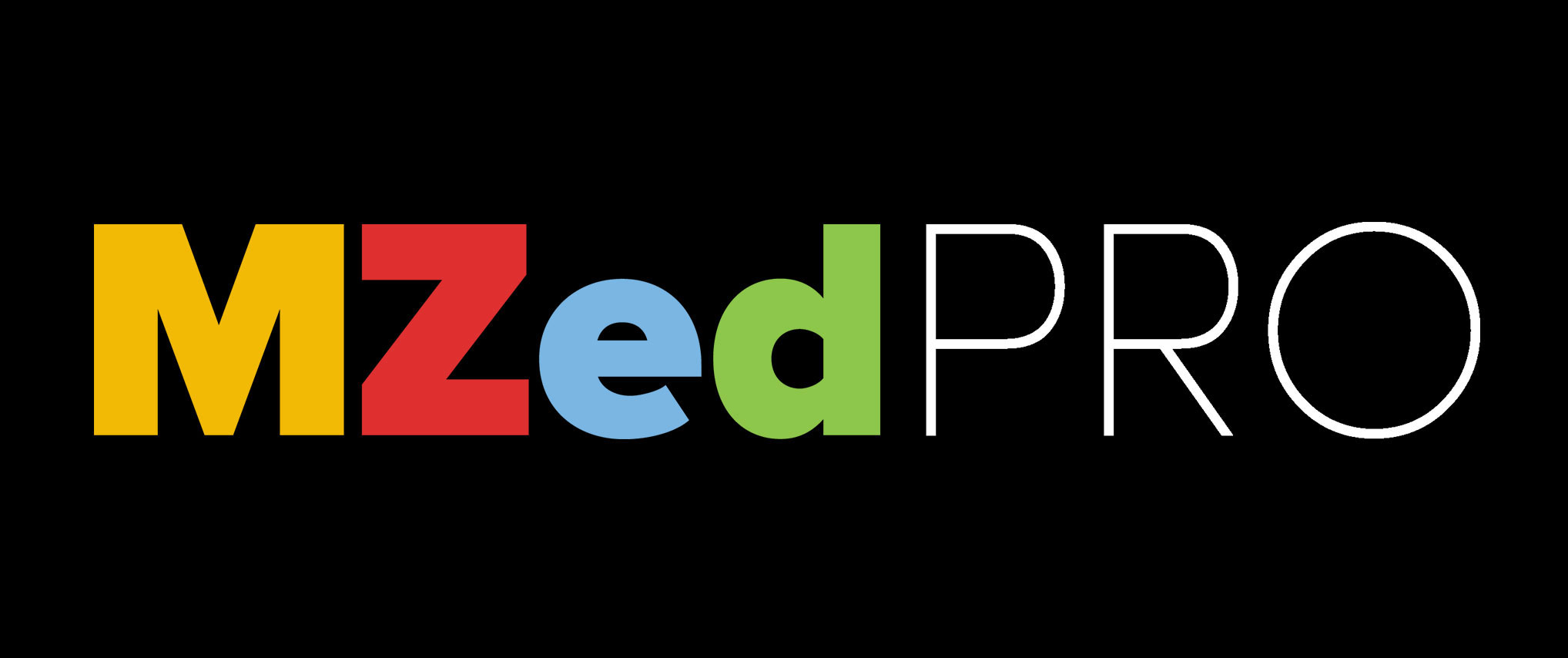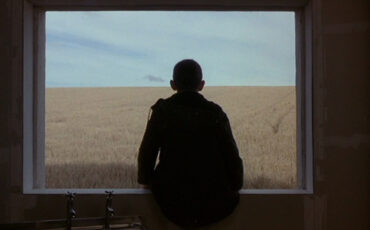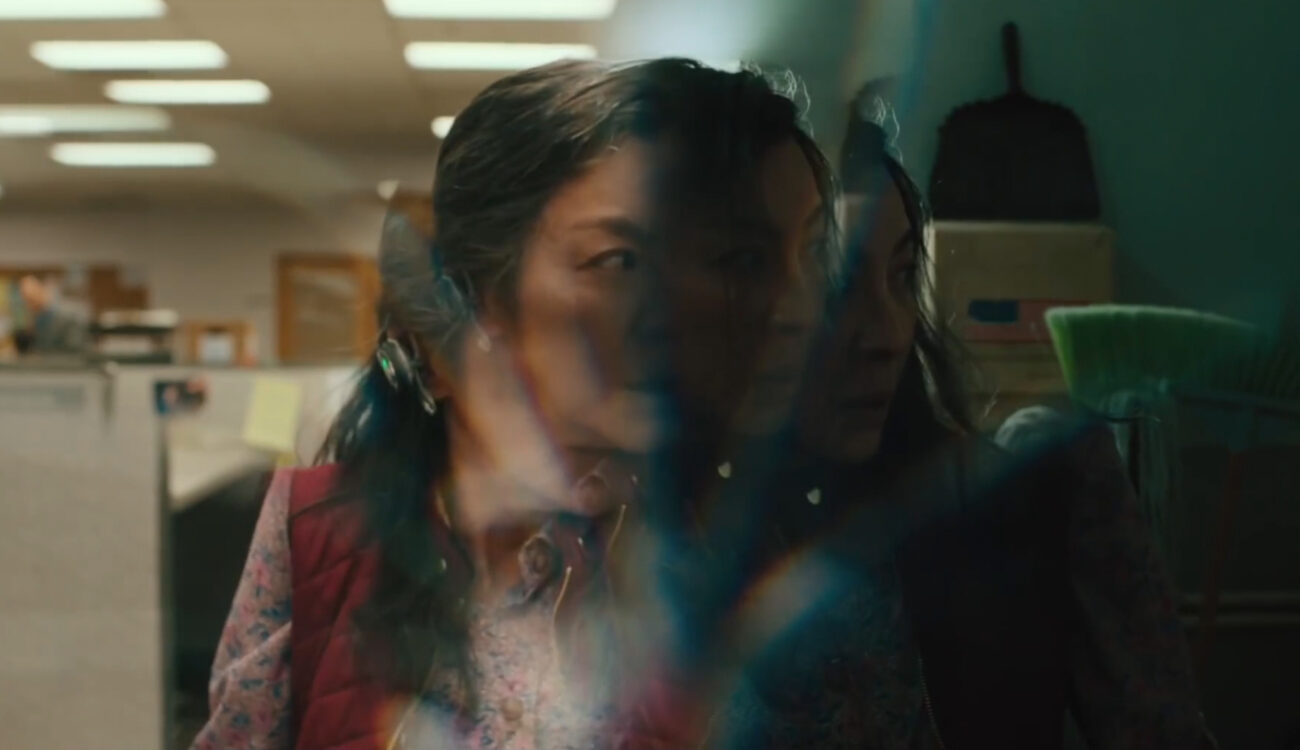
What if each decision and turning point we chose created alternative universes that ran parallel with reality? “Everything Everywhere All at Once” imagines the world we would land in, and good gracious, it is a bizarre and exciting experience! This action-packed comedic drama blows your mind not only with the complex story, but also with its style, sets, colors, and different visual approaches to each of the worlds created. In this article, director of photography Larkin Seiple shares some memories from the shooting process and de-veils creative decisions in the cinematography of Everything Everywhere All at Once.
The film follows the story of the stressed-out launderette owner, Evelyn, who has a seemingly mundane life until she discovers that only she can save the world. And then it starts: hopping through parallel universes, battles with the greatest evil, and glimpses of lives she could have led. “Everything Everywhere All at Once” leads this year’s Oscar race with 11 nominations, including best picture, original screenplay, editing, and actors’ performances. The effort behind it is visible even with an unaided eye, and it may seem like they had all the sources that they needed to achieve such an incredible result. Turns out, they didn’t. In the ASC clubhouse conversation, Larkin Seiple talks not only about the ideas and technical details of the film but also about the struggles and challenges along the way. We picked some of the most unusual ones below.
You can watch the whole conversation on MZed.com.
The creative approach to the cinematography of “Everything Everywhere All At Once“
Imagine you have to create a specific visual atmosphere for your film world from scratch. Now multiply this times 10. (Actually, make it 50). Don’t forget to include the weirdest variants and peculiar lighting ideas. You get the point, right? “Everything Everywhere All at Once” didn’t get a nomination for “best cinematography”, but that doesn’t mean it wasn’t outstanding. There were a lot of creative choices indeed.
The film’s cinematographer, Larkin Seiple, explains that he and Daniels (the name they call the director-duo of Daniel Kwan and Daniel Scheinert) didn’t just try to visualize the coolest and most extraordinary looks. No, each of the universes should encapsulate the emotional states of Evelyn Quan Wang (Michelle Yeoh). For example, the protagonist hates being in a reality where everybody has fingers that look like hotdogs instead of human fingers. It’s too bizarre for her, so the filmmakers created a kind of “Netflix comedy” atmosphere, as Larkin calls it, with flattering grading, ketchup-mustard tones, and a 2:1 aspect ratio.
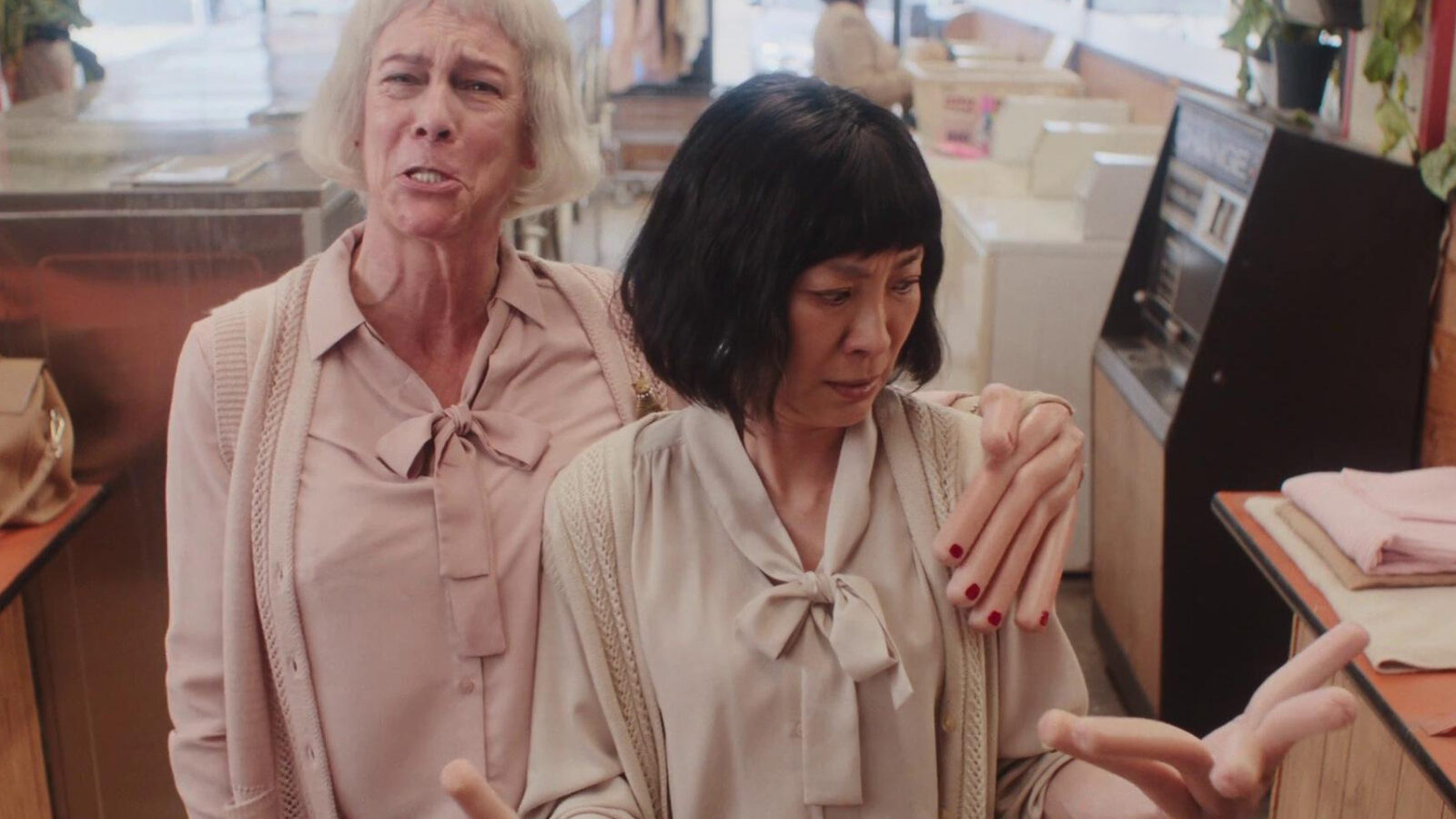
Compared to this, the reality in which Evelyn is an action star needed to be hypnotic and alluring. And the so-called alpha-verse, where people develop crucial technology to track the direction of other universes, possesses strong “Star Wars” vibes with a 16mm halation effect and a more dramatic film stock choice.
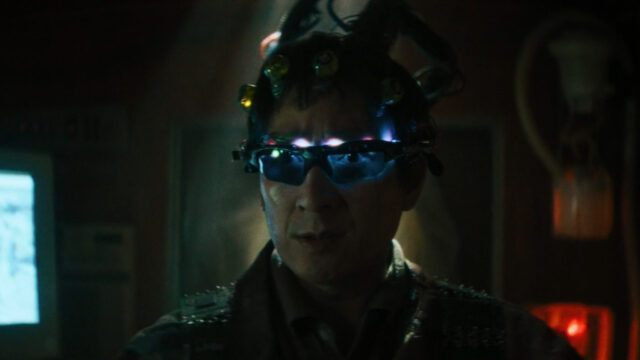
The cinematographer uses all available tools to visually separate the worlds from each other as well as to support the story. For instance, in one of Larkin’s favorite scenes – the beginning – he goes for mixed lighting. This is his way of underlining how much chaos is in the protagonist’s life: she literally cannot focus on anything, and cold-warm lights in one room only add to this feeling.
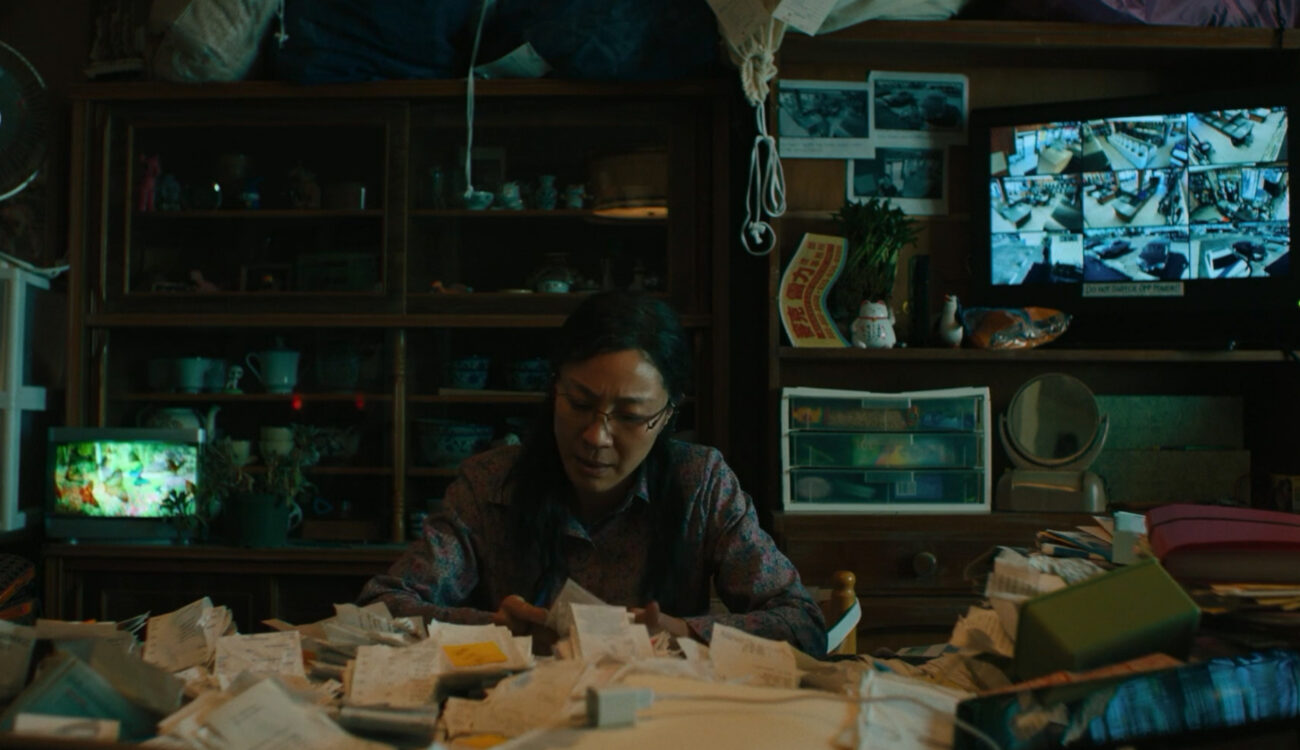
Technical decisions behind the look & feel
“Everything Everywhere All at Once” is fully shot on Arri Alexa Mini. To emphasize the difference between parallel universes and make them feel unconsciously more extreme, they used various lenses: both spherical and anamorphic, transitioning between two styles when the story needed it. A good illustration here is the early scene in the IRS building, where Evelyn’s husband, Waymond, eats Chapstick in order to jump into an action-verse. While he chews and drops his head, we see him through “normal” Zeiss Super Speeds. But in the next shot, when he is ready to fight, the image shows a sense of boldness and more of the “Die Hard” edge, as Larkin describes it – due to anamorphic optic.
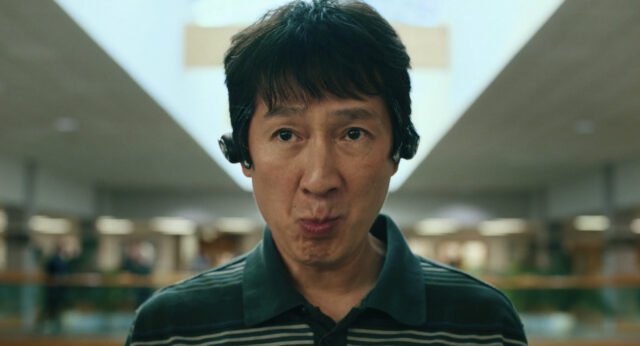
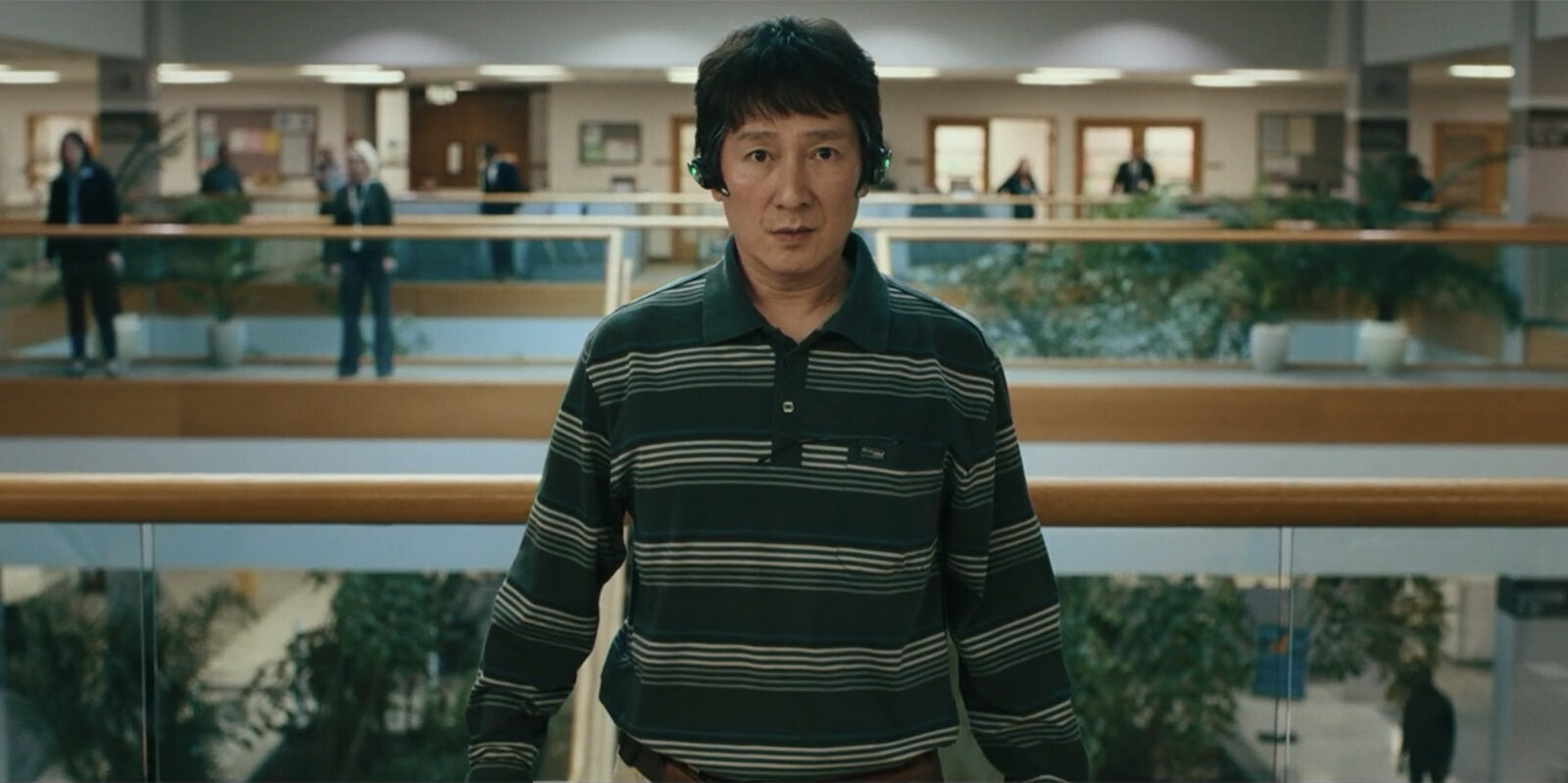
By the way, have you noticed the letterbox in the second shot? Exactly. The film plays with different aspect ratios ranging from standard widescreen 1,85:1 to 2:1 and cinemascope. There is even a single scene in 16:9, where two ancient rocks are speaking to each other. The cinematographer explains that they wanted it to feel like a National Geographic video. This is the only time he opted to shoot with fancy master prime glass to perfectly match the look.
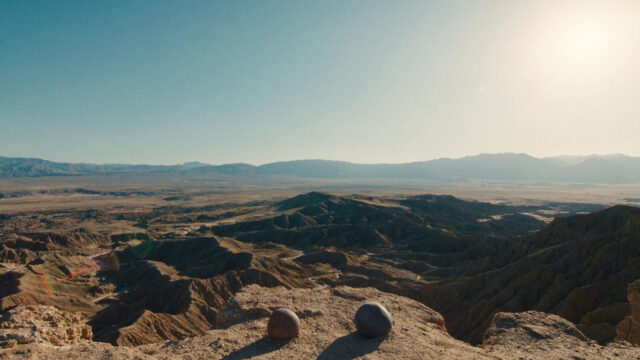
Another interesting detail in Seiple’s cinematography is his love for the vintage Harrison diffusion filter, though not for aesthetic reasons. He uses this filtration art (his favorite!) when it comes to fluorescent lighting or highlights that are too mean and harsh. As you can imagine, there were a lot of scenes with fluorescent lights, especially in the IRS building.
Challenges in the cinematography of “Everything Everywhere All At Once“
Guess how many shooting days they had on “Everything Everywhere All at Once”? 38 in total. Not much time to dress and shoot all these universes. And then the COVID-19 pandemic came in and messed up all their plans. It was very hard to go back and shoot the pick-ups, Larkin says. He remembers vividly how they captured the final fight between Evelyn and Jobu Tupaki, where each punch throws them into a new universe.
It was such bizarre camera work. This whole time Michelle Yeoh was in Paris. We shot all the beats for the fight in Los Angeles with her stand-in. Then we sent lighting plans and everything to the team in France, and they had to match every piece of lighting and every choreography movement shooting Michelle on the green screen. And finally, our post-production team comped all the pieces together in this complicated sequence.
Larkin Seiple, a quote from ASC clubhouse conversations
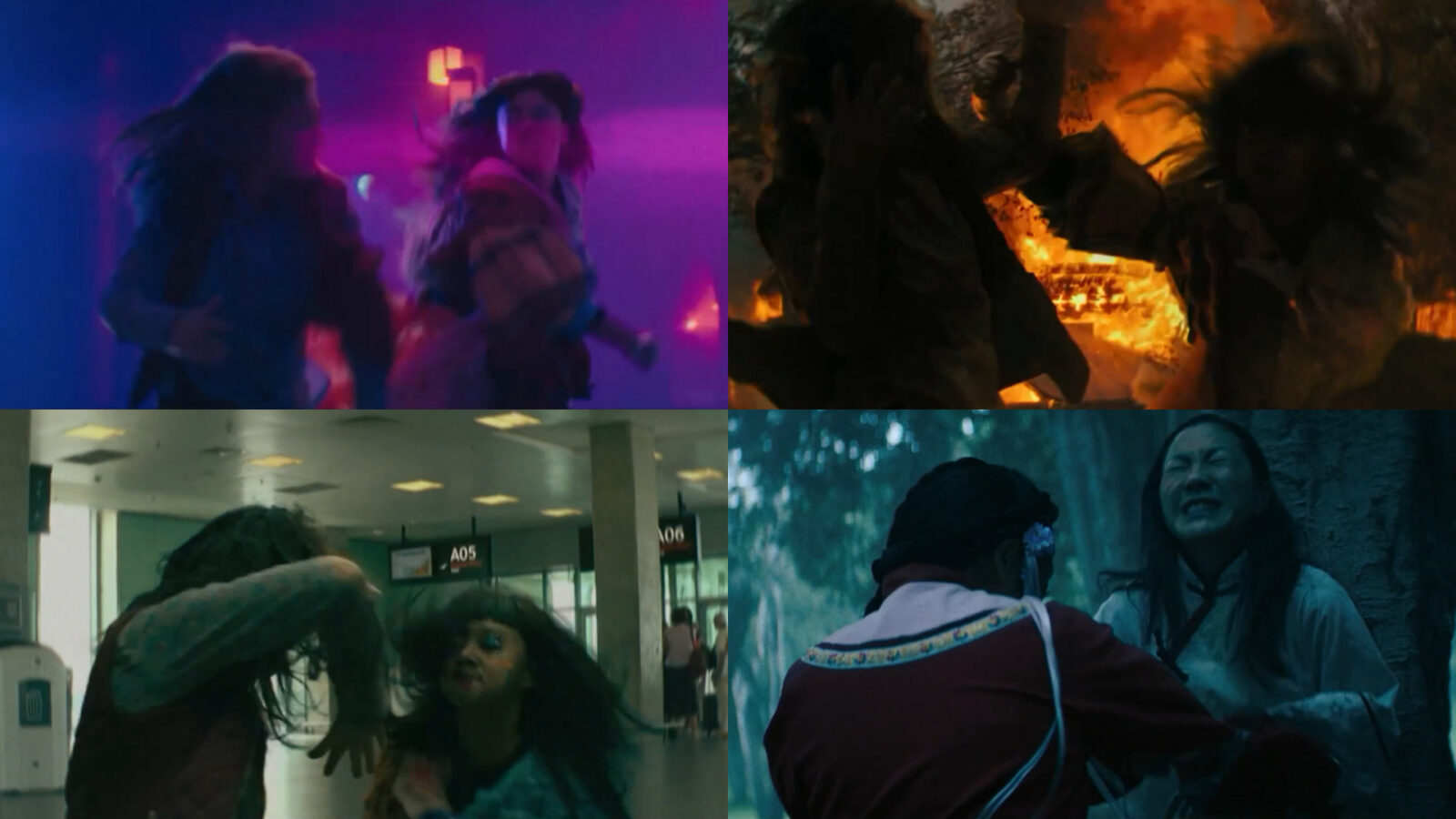
Even if it seems that “Everything Everywhere All at once” was an enormous production, they often didn’t have enough budget to do things properly. Filmmakers had to come up with creative and sometimes funny solutions. For example, we see a lot of high-speed work throughout the film, particularly in the scene where Jamie Lee Curtis’s character leaps through the air and moves down on Evelyn. It was an obvious “Matrix” moment, but compared to the reference which used insanely high frame rates, the multiverse crew only had 200 fps on hand. So they simply asked the actress to move twice as slowly as the other characters in the scene. Did we buy it? Sure we did.
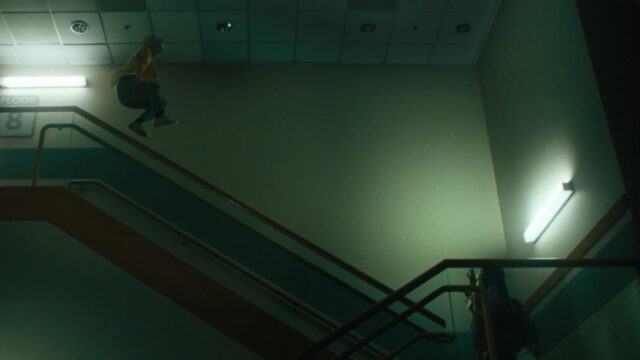
A further challenge for the multiverse cinematography was that they didn’t have a rigging team and had to keep the set crew at a minimum. Larkin remembers with laughter the HMIs bounced off the ceiling, which they used to imitate the skylight, or how the best boy would walk around the IRS building on stilts changing fluorescent tubes for half of the shoot. But when you have no means to do things “the right way”, every creative idea is welcome, even for this big feature film, which may now win an Academy Award for 11 nominations on the 12th of March.
Other exciting facts about the cinematography of “Everything Everywhere All At Once“
If you want to hear stories about how the production designer managed to dress this many sets or dive into Larkin’s detailed opinion on using Atlas Orion and Zeiss Super Speed lenses, you can head over to the full conversation. You will also find other exciting interviews with cinematographers in the exclusive module “ASC clubhouse conversations” on MZed.com. Meanwhile, we’ll follow with interest and see what awards “Everything Everywhere All at Once” will earn during the Oscars ceremony.
And what is your prognosis? How did you like the movie? Did you feel like you were jumping through different worlds thanks to the cinematography? Let’s discuss this in the comments section!
Feature image: a film still from “Everything Everywhere All at Once” by Daniels, 2022
Full disclosure: MZed is owned by CineD
UPD: On the 12th of March 2023, “Everything Everywhere All at Once” won Best Picture and also became the most-awarded Oscar winner since 2008. The filmmakers took home seven Academy Awards, including Oscars for Best Director, Best Original Screenplay, Best Lead Actress, Best Supporting Actress, Best Supporting Actor, and Best Film Editing.
